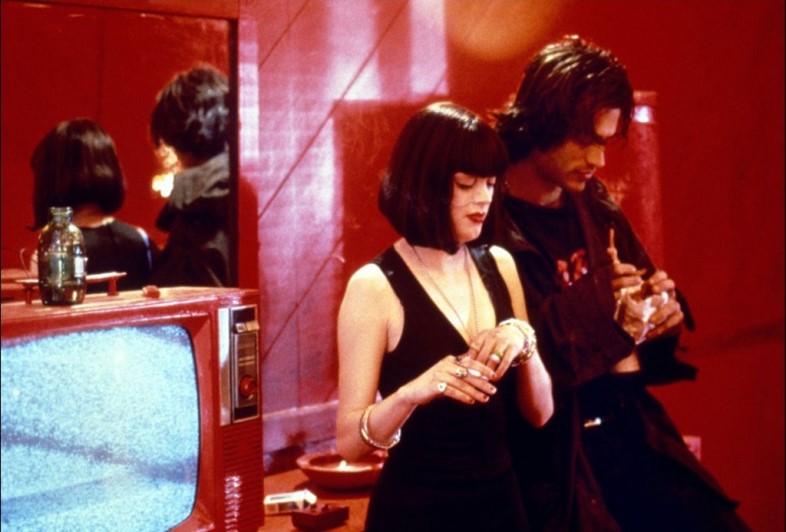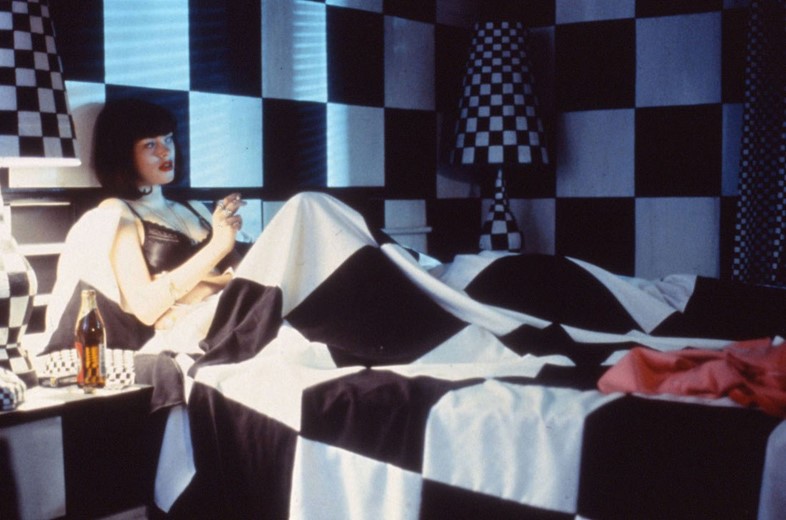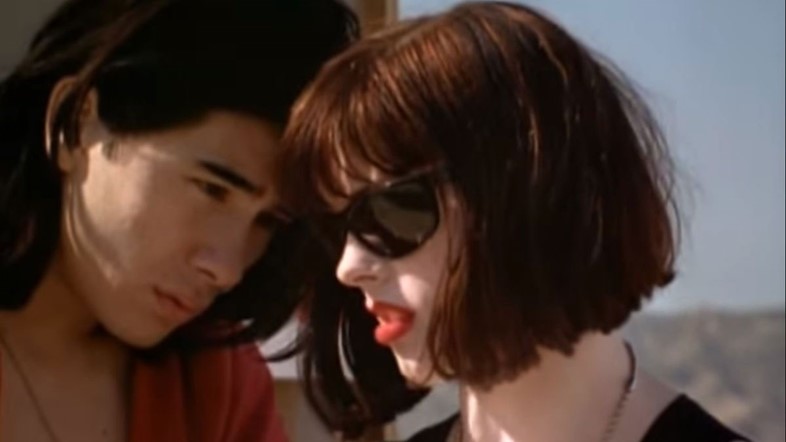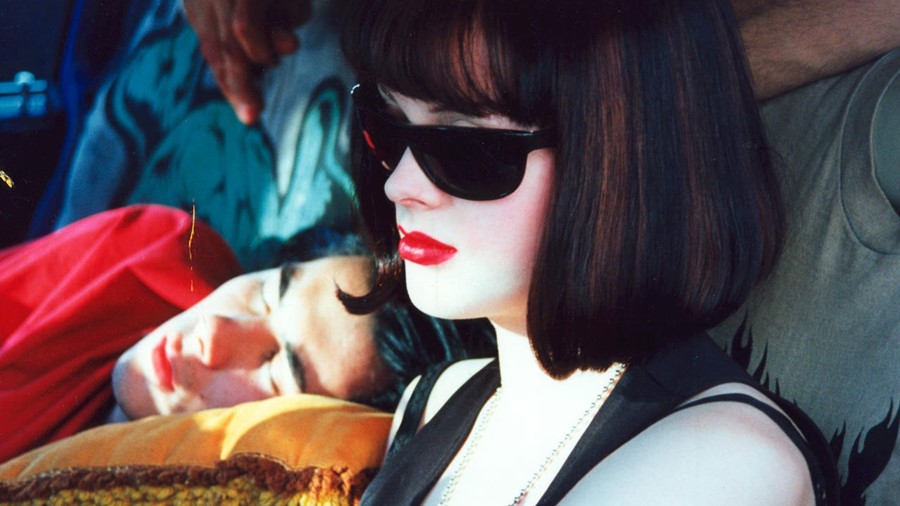We examine Rose McGowan's exceptional wardrobe and teenage insouciance as Amy Blue in Gregg Araki's cult film
When in 1995 Gregg Araki released The Doom Generation, the second film in his brilliant Teenage Apocalypse Trilogy, it stunned its contemporary audience; the acerbic one-liners, the stingingly satirical pop-cultural references and the willingly fluid approach to sexuality it boasted all tapping into the seductive paranoia of AIDS-era U.S.A. What he likely didn’t realise then is that the scrupulous attention to detail which made the film so rich in 1995 would continue to hold out more than 20 years later. Even now, it remains a plush homage to the power and pettiness of adolescence, accruing a cult following which has earned it iconic status.
The film follows the hyper-sexual relationship which plays out between Amy Blue (played by Rose McGowan), her boyfriend Jordan White, and their abrasive and troublemaking hitchhiker Xavier Red, as the trio races across the United States fleeing the scene of a gruesome cornershop murder they accidentally commit in its early scenes. At the film’s core, however, is the twisted coming-of-age story of its protagonist – and Amy is a perfect portrait of narcissistic disaffection. Over the years since the film’s release, its inspired script, pitch-perfect costume and all-round nonchalance have become the subject of YouTube tribute supercuts and Instagram moodboards alike.

The Signature Style
In her role as Amy Blue, then 16-year-old Rose McGowan is said to have played ‘herself’ to a T, from her intensely stylised dialogue (Amy’s script is littered with turns of phrase choreographed word for word by Araki: “what is this, Night of the Living Braindead?” she quips in one scene. “Wake up and smell the cappuccino, geek!”) to a series of styling decisions which locate her slap-bang in the centre of her coming-of-age. And in the 90s, of course, that meant punk rock – black Dr. Martens, deep-cut vintage sundresses and oversized leather jackets. “For Rose, I just went to punk rock,” costume designer Cathy Cooper told Emma Hope Allwood for Dazed Digital. “I looked at all the punk rock chicks that I used to hang out with. I was born and raised in Southern California, which has the hardcore scene. So she was a direct reference to ‘that chick’ that used to hang out with bands. Not a chick in a band, but a chick that used to hang out with bands. Two different things! That girl whose boyfriend was a singer, and who was completely narcissistic and really didn’t give a shit about anyone but herself. And that’s her character.”

The film’s satisfying dedication to the power of costume seems becomes, in part, a plot device; the pastel sundress sourced in a vintage store as part of the trio’s trip marks a key transition in the film, as each of the characters morphs into a new version of themselves before the action takes a turn for the sinister at its conclusion. While her costume shifts, however, Amy’s beauty look remains unchanging, her sleek black bob, perfectly applied red lipstick and thick-rimmed cat-eye sunglasses underpinning her part from beginning to end, whether soaking in the tub, toking on a post-coital cigarette in a hotel room bed, or being brutally abused in the film’s gruesome penultimate scenes.

One of her most crucial looks of all is the transparent raincoat. While early on this piece seems a sweet and girlish choice for the comparatively opaque character it clothes, later on it takes on a more ominous role. “It was kind of a multi-functional inspiration,” Cooper continues, “because in a later scene she gets tortured, and that plastic jacket actually served as an entrapment for her.” The raincoat becomes the yellow-wallpapered room of the angsty teen horror, and five years later it was to play a pivotal role on Christian Bale’s Patrick Bateman in the 2000 crime thriller American Psycho. A handsome, obsessive-compulsive professional with a penchant for slaughtering the imbeciles around him, Bateman chooses a similar item to keep the gore off his impeccably cut suit in one stylish, blood-smattered scene. Where thrillers are concerned, we learn, plastic raincoats are a bad sign.

The Modern Manifestation
Part of the brilliance of Araki’s The Doom Generation is that some 22 years after its initial release, the film remains an accurate representation of the treachery of adolescence, and of the uniform best employed to navigate it. Any vintage shop is primed to help you recreate Amy’s ensemble, from battered black Dr. Martens boots to that black dress, or the perfect peach frock, and a slick of red lipstick is the cherry on the cake. Lingerie optional. As for the raincoat? At Loewe’s Spring/Summer 2016 show, creative director Jonathan Anderson showed an assortment of retro-fantastic see-through overthings, and Raf Simons’ debut collection at Calvin Klein for A/W17 looked to transparency for the season ahead too, suggesting that raincoats, complete with heat-bonded seams and pockets primed to exposing all the teenage paraphernalia their wearer dares to leave in them, are having a moment.
